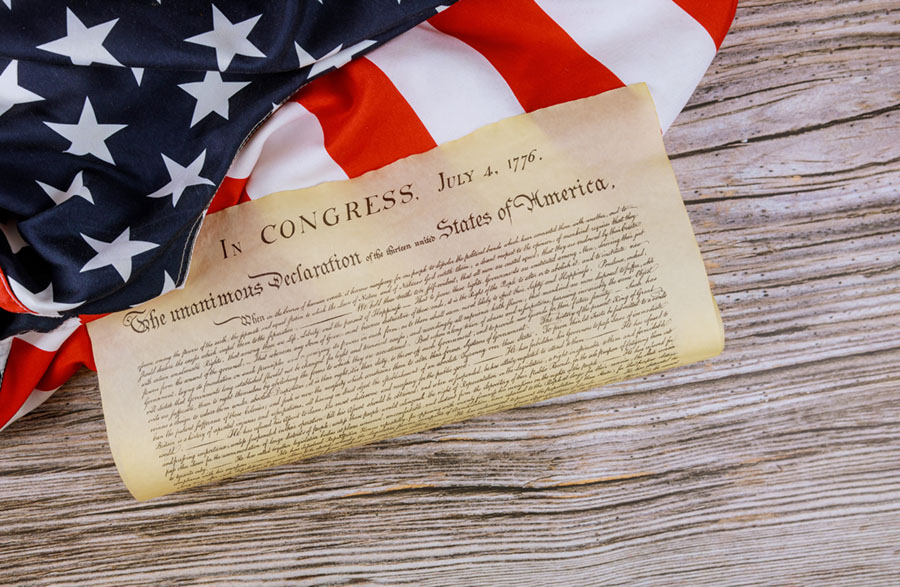
The Amendments of the US Constitution
Amendments of the US Constitution Are Rarely Added. Fundamental Principals of Constitution Must be Upheld and Maintained.
One of the powers allowed to Congress in the United States Constitution is the power to create new amendments of the US Constitution.
This power has been seldom used and is perhaps the only area in which the United States Congress does show restraint as only 17 Amendments have been added to the Constitution after the original 10 Amendments contained in the Bill of Rights.
With a lot of controversy surrounding the Senate appointment by embattled Illinois Governor Rod Blagojevich to replace President Barack Obama, and the possible appointment of Caroline Kennedy, the last surviving child of President John F. Kennedy, despite her lack of experience to Secretary of State Hillary Clinton’s seat, many in Congress, especially Wisconsin Senator Russ Feingold are pushing for legislation.
Senator Feingold is expected to introduce legislation to create a 28th Amendment that would prohibit Governors from appointing interim Senators and having a special election instead.
Although such a process would be costly, it would cut down on many of the controversial and unpopular picks by state Governors.
The Women’s Suffrage Movement
One of the forgotten ironies in the history of the United States is that African-Americans were granted the right to vote decades before women received that same right.
One of the Amendments to the Constitution during the 20s gave them that right.
The fight for women’s rights was a long and difficult one but when a women’s suffrage Amendment was introduced to Congress it became even more difficult.
The original vote, which was supported the entire time by President Woodrow Wilson and held the honor of being the only civil right that Wilson ever supported, lost by thirty votes on the floor of the House .
Three years later, on January 10, 1918, Wilson pushed the House to pass the bill and this time it passed by one vote.
Wilson then tried to push the Senate to pass the same bill but it fell just two votes short and then just one vote short the next time the bill landed in the Senate.
The Amendment was finally passed by both Chambers of Congress during a special session of Congress called by President Woodrow Wilson a few months before the 1920 elections.
The bill then was quickly ratified by the individual states throughout the summer and took effect in time for the 1920 elections which served as the very first time that women across the entire nation could vote.
The Income Tax Amendment
One of the amendments of the US Constitution during the late 1800s was the Sixteenth Amendment which created the income tax.
The income tax, which was at that time only collected by states, began as a small percent tax on people’s income and has grown substantially over the years.
There have been many movements to repeal this and other amendments of the US Constitution. The Fair Tax has been made popular over the last decade or so which would eliminate the IRS and the income tax and impose a large sales tax on all goods.
Presidential Limitations
Until the 1940s, there was never a limit on how many terms a President could serve, but it was George Washington who started the tradition of serving a maximum of two terms in order to exemplify the democratic system of the United States.
There had never been a President to serve more than two terms until Franklin Delano Roosevelt was elected for four terms but died early into his fourth term.
A little known fact is that other Presidents did seek third terms like Ulysses S. Grant and Theodore Roosevelt but did so unsuccessfully.
Because Roosevelt had become so powerful, Congress sought a way to cramp the President’s power.
In 1951, the only amendments of the US Constitution of the mid-1900s was finally ratified, six years after Roosevelt’s death, and President Eisenhower became the first President in history who would not be able to seek a third term if he had wanted.

 My First Amazing Ayahuasca Experience
My First Amazing Ayahuasca Experience  Pine Needle Tea
Pine Needle Tea  The REAL Controllers of Humanity: The Papal Bloodlines
The REAL Controllers of Humanity: The Papal Bloodlines  Is it Global Warming or Cooling?
Is it Global Warming or Cooling?  Gun Rights and Obama Examined
Gun Rights and Obama Examined